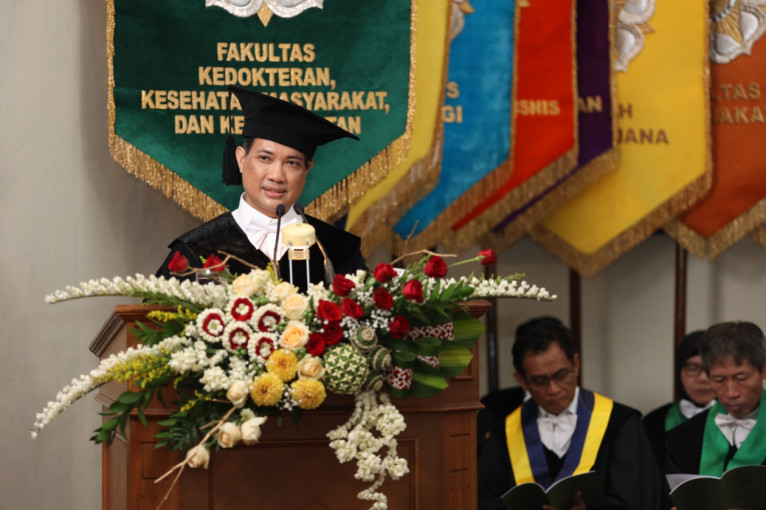
Higher education institutions emerge as pivotal players in the dynamic landscape of health policies and practices, wielding strategic influence in promoting and integrating evidence-based approaches.
The onset of the pandemic has upheaved established norms, catalyzing transformative shifts and a heightened focus on using evidence.
To navigate this terrain effectively, there is a pressing need for higher education institutions to transcend ad hoc initiatives and embrace a systematic, integrated approach, heralding a new era of institutionalization.
This call was sounded by Professor Yodi Mahendradhata of the UGM Faculty of Medicine, Public Health, and Nursing during his inaugural speech as a full professor held at the UGM Senate Hall on Thursday (Dec. 7).
Under the thematic banner “Readiness of Higher Education Institutions to Support the Use of Evidence in Health Policies and Practices,” Professor Mahendradhata emphasized the profound impact of the pandemic on institutional dynamics.
He highlighted the imperative for institutions of higher learning that have successfully weathered the storm of deinstitutionalization to steer the pre-institutionalization phase.
Institutions are urged to adopt novel practices, structures, and procedures in this preliminary stage to respond to evolving challenges proactively.
Professor Mahendradhata recommends the creation of non-permanent structures, such as task forces dedicated to evidence utilization, to experiment with innovative approaches.
“This phase can be supported by the formation of non-permanent structures through task forces for evidence utilization,” said the Dean of the UGM Faculty of Medicine, Public Health, and Nursing.
As the journey progresses into the semi-institutionalization phase, higher education institutions are tasked with disseminating innovations across a diverse spectrum of adopters.
He emphasized the pivotal role of leaders in bestowing official mandates and formal operationalization to efforts championing evidence utilization.
This entails clear decision-making processes and the formulation of standard operating procedures (SOP) bolstered by regulatory support from institutional leaders.
However, he cautioned that while formalizing regulations enhances legitimacy and bolsters the demand for services offered by institutional governance for evidence utilization, flexibility remains essential.
Structures and regulations, at this juncture, should retain a degree of adaptability, allowing for modification or dissolution as needed.
In this symphony of change, higher education institutions are poised to orchestrate a harmonious blend of tradition and innovation, cultivating an environment where evidence-driven practices flourish and become an integral part of the institutional DNA.
Author: Gusti Grehenson
Photographer: Firsto

